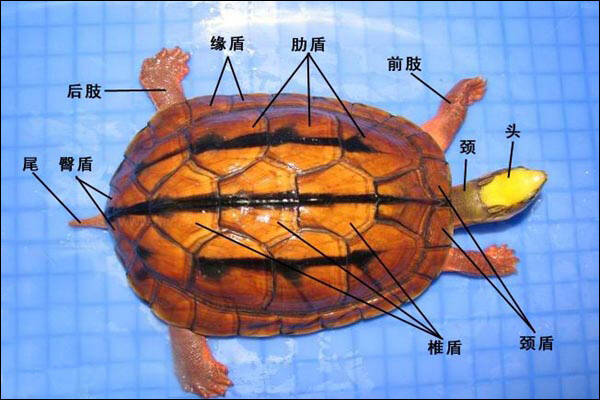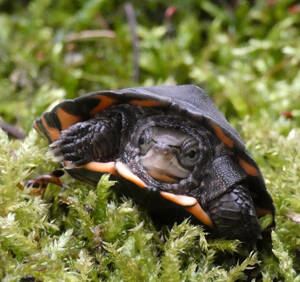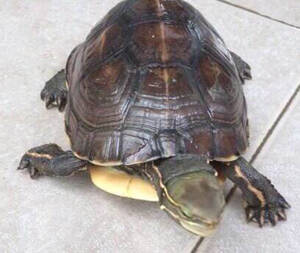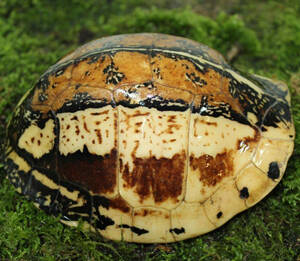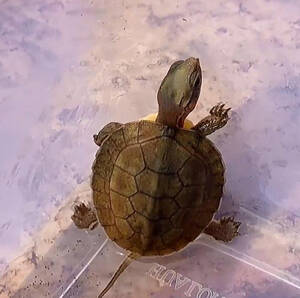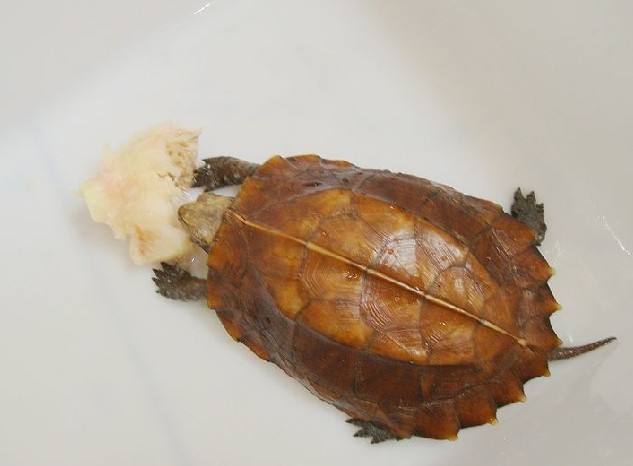Scatophagus argus
IUCN
LCBasic Information
Scientific classification
- name:Scatophagus argus
- Scientific Name:Scatophagus argusThree-lined box turtle, red-sided turtle, red-bellied turtle, broken plate turtle, golden-headed turtle
- Outline:Testudines
- Family:Testudinata Testudinidae B.turtle
Vital signs
- length:
- Weight:1.25~1.50kg
- lifetime:
Feature
It has a golden appearance, a red base, and a docile personality, making it suitable as a pet.
Distribution and Habitat
Distributed in Guangdong, Guangxi, Hainan, Fujian, Hong Kong and other provinces in China and Southeast Asian countries such as Vietnam and Laos.
They live mostly in canyons, streams, river forks and lakes in mountainous and hilly areas, and sometimes crawl into wet mountain streams, grass and rice fields.
Appearance
The head is long and slender, the top of the head is smooth and scaleless, the snout is blunt, the upper beak is slightly curved, the throat and neck are light orange-red, and there are angular brown spots behind the eyes on both sides of the head. The back of the head is waxy yellow, the carapace is reddish brown, there are 3 black vertical stripes, resembling the Chinese character "川" and the central stripe is longer (no in juveniles), the front and back edges of the carapace are smooth and not serrated. The plastron is black with yellow edges, and the back and plastrons, chest and abdominal shields are connected by ligaments, and the turtle shell can be completely closed. The skin of the armpits, limbs, and tail is orange-red. There are webs between the fingers and toes, and the tail is short and pointed.
Details
The scientific name of the golden coin turtle is the three-lined box turtle (Cuora trifasciata), which belongs to the order Testudinata, family Testudinidae, subfamily Testudininae, genus Testudinata, and is a second-class protected animal in my country. The golden coin turtle is a precious animal resource, and its whole body is a treasure. It has important significance and economic value in medicine, appreciation, craft production, consumption, and modern scientific research. People's demand for golden coin turtles is increasing, but in nature, due to its low reproduction number and the crazy hunting and killing by people, its population is declining, and it is difficult to find it in the wild.
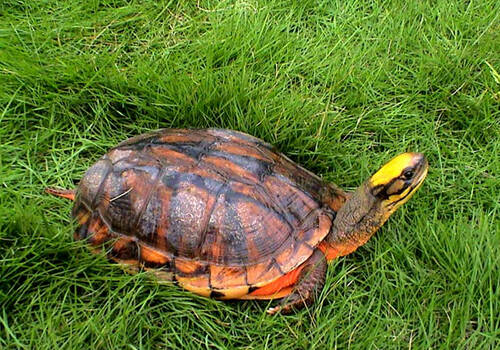
The golden coin turtle breathes with its lungs and lives an amphibious life on land and water. It lives mostly in canyons, streams, river forks, and lakes in mountainous and hilly areas, and sometimes crawls into wet mountain streams, bushes, and rice fields. In sunny weather, it likes to bask in the sun on land, but in hot weather, most of them hide in the dark, and have the habit of living in groups and caves.
The golden coin turtle is a cold-blooded animal. Its activities are directly affected by the external temperature. The suitable growth temperature is 24~32℃, the lethal high temperature is 45℃, and the lethal low temperature is 4℃. When the ambient temperature reaches 23~28℃, it is active frequently; when the water temperature is 29~31℃, it is most active, has the strongest appetite, and grows fastest. When the temperature is higher than 36℃ or lower than 16℃, its activity and food intake are significantly reduced. In the hot season, it is mostly active at night and in the cool morning. After eating, it dives into the water or hides in the nest for a short summer hibernation. When the temperature is low, its activities are mostly carried out at noon. When the temperature drops to around 10-15℃, the golden coin turtle enters hibernation. The hibernation period of the three-lined box turtle in southern China is from December to February of the following year, and it begins to leave the nest to look for food in early March. The golden coin turtle is gentle in nature and does not bite people. The same species rarely attack each other. When encountering enemies, it can only dodge but not fight back.
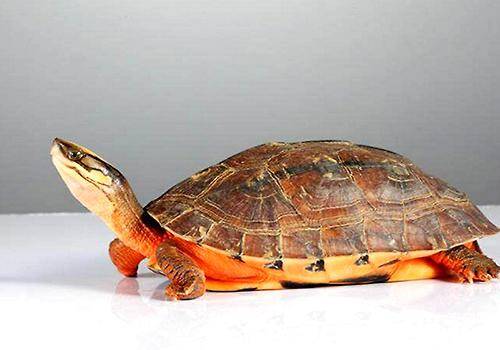
The golden coin turtle is omnivorous. It forages for various aquatic animals such as fish and shrimp in the wild, and also eats a small amount of wild vegetables and fruits. It likes to eat earthworms, bee pupae and animal viscera. When artificially bred, they are mainly carnivorous, and can also be fed with full-price mixed feed with a protein content of about 40%.
The golden coin turtle is a traditional Chinese medicinal material and one of my country's traditional export commodities, with broad market prospects. However, the golden coin turtle is a national second-level key protected wild animal, that is, it is a legally protected animal. If you raise it, you must go to the local aquatic administrative department (such as the Aquatic Bureau) to apply for a "license for domesticating and breeding aquatic wild animals" or cooperate with a large turtle farm, otherwise it will be considered illegal operation.
